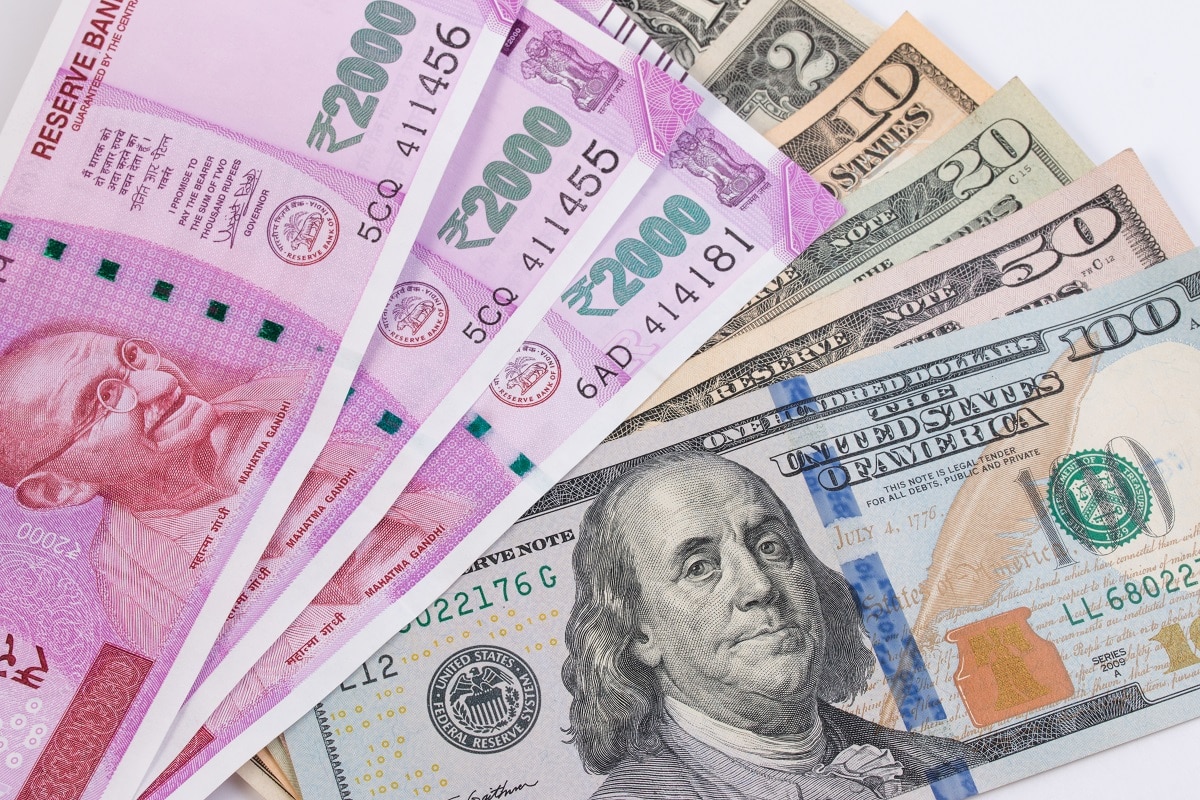Non-resident Indian (NRI) remittances to India, especially from the Gulf region, are set to surge in the coming days and weeks, with the Indian currency seen to be on its path to test a psychological level of 80 mark against the US dollar soon, banking and currency market experts said.
Rupee touched an all time low at INR 79.08 against the greenback in the morning trading hours on Tuesday.
India’s ballooning trade gap and capital outflows are raising new risks for the rupee, market experts said.
The South Asian country’s trade deficit surged to a record $25.63 billion in June, driven by rising imports of crude oil and gold, among other goods.
Saudi Arabia and the UAE account for a major chunk of crude exports, while the UAE is the second-largest exporter of the precious metal to India.
“The rupee’s weakening will help remittance inflows to India, especially from the Middle East region,” a senior executive with an Indian public sector bank said.
Executives at foreign exchange remittance firms also said they were observing a jump in fund inflows by expat Indians, especially from the UAE and the larger GCC region in the recent days.
They, however, said it was difficult to draw up the data on expat remittances for the preceding weeks.
Market experts said the Indian government’s recent move to bolster its foreign exchange reserve kitty by encouraging NRIs to make remittances up to certain specified limits to their relatives back home without informing authorities was also expected to lead to increased fund flow from them in the coming weeks and months.
India’s home ministry on Sunday amended certain rules related to the foreign contribution (regulation) Act (FCRA), allowing residents to receive up to $12,644 (one million rupee) from their relatives staying overseas without informing authorities.
Earlier, the limit for such payments was $1264.

“This is expected to add to the surge in NRI remittances, especially from the Middle East region, in the coming weeks and months” Ajay Kedia, managing director of Kedia Commtrade and Research, told Arabian Business.
India’s forex reserve dropped below the $600 billion mark, as the central bank has been selling dollars in the market to check the slide in rupee value.
Historically, the weakening trend of rupee led to a surge in non-resident Indian (NRI) remittances to the South Asian country, as expats can earn more bucks for each dollar remitted.
NRIs based in the Gulf region account for a larger chunk of expat remittances to India.
Total expat remittances to India were estimated to be a little over $15 billion in the last quarter of 2021, according to available data by market research firms.
Foreign market experts said the rupee is expected to further weaken on a near-term basis.
“The sharp rally in crude oil prices, unprecedented selling by the FIIs over past few months and the interest rate tightening cycle by the central banks in order to curb inflation have been the primary factors for this kind of depreciation in the local currency,” Himanshu Gupta, vice-president, Globe Capital Market, told Arabian Business.

“Going forward, the risk still remains on the upside for USD, and rupee is likely to breach 80 levels, with the immediate target remaining 80.6 against one dollar,” Gupta said.
Ashok Jha, a policy expert and a former finance secretary to the government of India, said the slide in rupee value against dollar was expected since the Indian currency was overvalued.
“The exporters would be happy as it makes their exports competitive. However, since imports would be costlier, we would be paying more for essential imports such as crude oil,” Jha told Arabian Business.
A shortfall in India’s current account — the broadest measure of trade — will probably widen to 2.9 percent of gross domestic product in the fiscal year ending March 31, according to a Bloomberg survey in late June, nearly double the level seen in the previous year.








